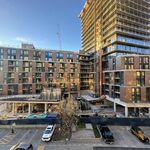Obama vows to slash oil aid, race to clean energy
US President Barack Obama vowed to eliminate billions of dollars of oil subsidies in order to invest in a space race-like drive towards a clean energy future.
"I'm asking Congress to eliminate the billions in taxpayer dollars we currently give to oil companies. I don't know if you?ve noticed, but they're doing just fine on their own," he said in his State of the Union address.
"Instead of subsidizing yesterday's energy, let's invest in tomorrow's," he added in the annual speech outlining his main policy goals.
Obama vowed government support for research that could lead to breakthroughs in green energy, comparing such efforts to the Cold War race to the moon.
"We're not just handing out money. We?re issuing a challenge. We're telling America?s scientists and engineers that if they assemble teams of the best minds in their fields, and focus on the hardest problems in clean energy, we'll fund the Apollo Projects of our time," Obama said.
"With more research and incentives, we can break our dependence on oil with biofuels, and become the first country to have one million electric vehicles on the road by 2015."
Obama challenged the country to scale back its dependence on fossil fuels, setting the goal of producing 80 percent of US electricity from "clean energy sources" by 2035.
"Some folks want wind and solar. Others want nuclear, clean coal, and natural gas. To meet this goal, we will need them all, and I urge Democrats and Republicans to work together to make it happen," Obama said.
Last year Obama championed a clean energy bill that would have set up a "cap-and-trade" program to reduce emissions in the world's second largest polluter, only to see it die in the Senate.
He faces an even steeper climb now that resurgent Republicans -- who oppose carbon regulations they say would hamper a desperately-needed economic recovery -- control the House of Representatives.
The 21-page "Pledge to America" released by Republicans in September calls for increased access to domestic energy sources and opposition to what they describe as a national "cap-and-trade" energy tax.
Republicans have often derided Obama's clean energy policies as "job killers," and support offshore oil drilling and drilling in the Arctic, nuclear power plants, and coal-to-liquid technology




